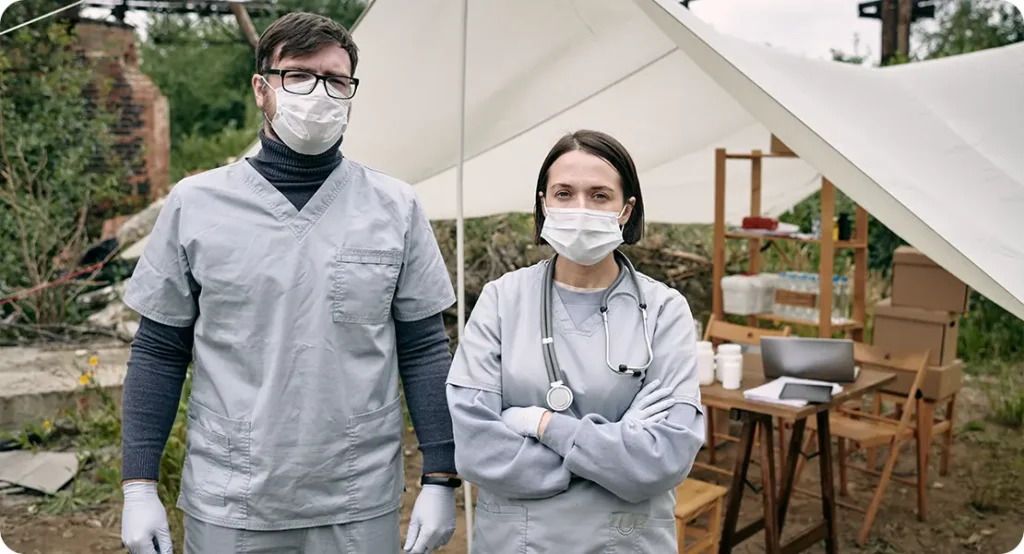When most people think about dermatologists, the first thing that comes to mind is probably skin checks, acne treatment, or perhaps mole removals. And yes, these are certainly important parts of what dermatologists do. But there’s a whole world of behind-the-scenes work that often goes unnoticed—and it’s making a much bigger impact on public health, scientific progress, and healthcare systems than many realise.
If you’ve ever benefited from a new eczema treatment, seen an anti-skin cancer campaign, or noticed improvements in how dermatological services are delivered in the NHS, chances are dermatologists were working hard in the background to make it happen. Let’s lift the lid on the hidden work dermatologists do, from spearheading research to influencing national policy.
1. Driving Innovation Through Clinical Research
Dermatologists are heavily involved in the kind of research that changes how we treat skin conditions. Many act as principal investigators in clinical trials, helping to test everything from groundbreaking biologic therapies to new formulations of topical creams.
Unlike research conducted in labs by scientists in white coats, clinical research involves real patients. Dermatologists help design the trials, recruit suitable participants, ensure ethical protocols are followed, and collect detailed data on outcomes. Their insights from the clinic feed directly into the study design, which is vital—after all, they know the real-life impact skin conditions have on patients.
A perfect example is the revolution in psoriasis treatment over the past decade. Dermatologists played a key role in clinical trials for biologics like secukinumab and guselkumab, which target very specific parts of the immune system. These medications didn’t just appear overnight—they were rigorously tested in trials led and overseen by dermatologists, with long-term patient monitoring that’s still ongoing.
And it’s not just medication. Dermatologists are helping validate new diagnostic tools, AI-powered skin scanners, and even wearable tech to monitor flare-ups. They are essential partners in multidisciplinary teams pushing the envelope in how we detect and manage skin disease.
2. Shaping Public Health Campaigns and Prevention Strategies
You may have seen NHS campaigns encouraging people to wear sunscreen or check moles regularly. Behind these initiatives are dermatologists working with public health officials, helping to craft messages that are accurate, practical, and persuasive.
Skin cancer is a major area of focus here. Dermatologists often serve on advisory panels that determine how public health messages about melanoma and non-melanoma skin cancers are delivered. Their clinical experience means they know which myths need busting and what kind of information the public truly needs.
But it’s not just cancer. Public health dermatology also tackles issues like scabies outbreaks in care homes, head lice in schools, and infection control in beauty clinics. Dermatologists provide expert guidance to local councils and national bodies alike, translating their knowledge into action at scale.
They’re also advocates for underserved populations. From advising on how best to reach ethnic minority groups with tailored skincare advice, to flagging the dermatological needs of the homeless population, dermatologists help ensure skin health isn’t an afterthought in public health planning.
3. Educating the Next Generation of Doctors
If you’ve ever been treated by a GP who spotted a tricky skin condition early, chances are they had a solid foundation in dermatology—thanks to a dermatologist who taught them.
Dermatologists are deeply involved in medical education. At medical schools across the UK, they deliver lectures, lead clinical rotations, and assess students. They help ensure that all doctors, regardless of specialty, can recognise common skin conditions and know when to refer.

This is incredibly important given how frequently skin issues come up in general practice. Studies have shown that up to 20% of GP consultations involve a skin complaint. Dermatologists who teach medical students and junior doctors are indirectly improving care for millions of patients by raising standards across the board.
Outside of formal teaching, many dermatologists write textbooks, contribute to online resources like DermNet, or develop clinical guidelines. Some even create podcasts or social media content to make skin education more accessible. Their commitment to education extends far beyond the hospital walls.
4. Guiding National and International Health Policy
You might be surprised to learn that dermatologists help shape national health policy in the UK. Through organisations like the British Association of Dermatologists (BAD) and the National Institute for Health and Care Excellence (NICE), they offer expert input on everything from NHS treatment pathways to funding for new therapies.
When NICE evaluates whether a new psoriasis drug should be approved for use in the NHS, dermatologists are involved in every step—from reviewing clinical evidence to providing real-world perspectives on patient needs. They play a balancing act between evidence-based care and practical, equitable access.
Internationally, UK dermatologists often serve as advisors to the World Health Organization and other global health bodies. For example, some have contributed to global guidelines for leprosy, vitiligo, and skin neglected tropical diseases.
Their voices help ensure that policies reflect the complexity of skin disease—its physical, psychological, and social dimensions. And as skin cancer rates rise and skin diseases become more linked to chronic conditions, their policy role becomes even more crucial.
5. Advancing Equality and Inclusion in Dermatology
Skin care isn’t one-size-fits-all. Dermatologists have long advocated for better representation of skin diseases in diverse skin tones—something that’s been historically lacking in medical textbooks and diagnostic tools.
This has real consequences. Conditions like melanoma often get diagnosed later in people with darker skin, partly because doctors don’t recognise how they present. Dermatologists are working hard to correct this, through education, image banks, and curriculum reform.
There’s also growing awareness that people from marginalised communities face barriers in accessing dermatological care. Dermatologists are involved in outreach programmes, community clinics, and training schemes aimed at improving access and cultural sensitivity in care delivery.
They’re also pushing for research studies to include more diverse participants, so treatments are tested on people with all skin types—not just white patients. That means fairer, safer, and more effective care for everyone.
6. Supporting Mental Health Through Holistic Care
Dermatologists see first-hand how skin conditions impact mental health. Living with acne, psoriasis, or scarring isn’t just a cosmetic issue—it can lead to anxiety, depression, and social withdrawal.
Because of this, many dermatologists advocate for a more holistic approach to skin health. They don’t just treat the physical symptoms—they support patients emotionally, too. Some clinics now have psychodermatology services, combining mental health and skin expertise in one place.

Dermatologists also publish studies and push for policies that integrate mental health into dermatological care. This includes calls for longer consultation times, mental health screening, and better access to support services.
By championing whole-person care, dermatologists are helping to change how we think about skin conditions—from surface-level problems to deep, multifaceted challenges.
7. Running Specialist Clinics and Leading Multidisciplinary Teams
Beyond general dermatology clinics, many consultants lead highly specialised services. These might focus on rare genetic conditions, autoimmune skin diseases, or complex allergies.
Running these services involves much more than seeing patients. Dermatologists liaise with immunologists, geneticists, pathologists, and psychologists. They help coordinate care, interpret specialist tests, and ensure patients get joined-up support.
They also write referral criteria, triage incoming cases, and help local hospitals build similar clinics through mentorship and training. In many ways, dermatologists act as the backbone of the UK’s most advanced skin services.
Their leadership in multidisciplinary teams ensures that patients with complex conditions don’t fall through the cracks—and that NHS resources are used efficiently.
8. Taking on Leadership Roles in Hospitals and Academia
Many dermatologists also step into leadership roles within the NHS and university settings. Some become clinical directors, overseeing dermatology departments and managing everything from budgets to staffing to service redesign.
Others become professors, deans, or heads of research institutes. These roles allow them to shape the strategic direction of dermatology education and innovation.
What’s important here is that their leadership is grounded in years of clinical practice. They bring a patient-focused perspective to decision-making rooms that are often dominated by administrators or policymakers.
This ensures that skin care services remain responsive, equitable, and evidence-based—whether in a teaching hospital, a local trust, or a national health agency.
9. Contributing to Scientific Journals and Medical Guidelines
Dermatologists are prolific contributors to scientific literature. They write research papers, editorials, case reports, and systematic reviews. Their work is published in respected journals like the British Journal of Dermatology, The Lancet Dermatology, and JAMA Dermatology.

These publications aren’t just academic exercises—they help shape global best practices. Dermatologists distil their clinical experience into articles that guide colleagues around the world.
They also sit on guideline panels for conditions like acne, atopic dermatitis, and melanoma. Their consensus recommendations influence how thousands of GPs, pharmacists, and dermatology trainees treat patients every day.
This kind of intellectual labour rarely gets public attention, but it’s one of the most powerful tools dermatologists have to elevate standards of care worldwide.
10. Responding to Emergencies and Emerging Diseases
During the COVID-19 pandemic, dermatologists spotted early warning signs of the virus—such as the now well-documented “COVID toes.” They helped define new symptom patterns, guided infection control in dermatology clinics, and adapted services for safe remote care.
In emergencies, dermatologists also respond to outbreaks of skin-related illnesses, such as monkeypox or antibiotic-resistant infections in the community. Their ability to recognise patterns and communicate risk quickly makes them invaluable in crisis response.
Some dermatologists also work in humanitarian contexts, volunteering with organisations like Médecins Sans Frontières to bring dermatology care to regions affected by conflict, poverty, or natural disasters.
In short, they’re not just there for rashes and warts—they’re front-line responders in times of uncertainty.
11. Engaging in Global Health and Humanitarian Work
While dermatologists often work in clinics and hospitals, many also contribute their expertise to global health efforts and humanitarian missions. Skin diseases are among the most common health issues worldwide—particularly in low-resource settings where access to basic skincare, hygiene, and medication is limited.
Some dermatologists volunteer with international organisations like the World Health Organization, the Red Cross, or Médecins Sans Frontières, offering vital care in areas affected by conflict, natural disasters, or poverty. They treat conditions such as cutaneous leishmaniasis, fungal infections, and neglected tropical diseases that rarely present in Western clinics but cause significant suffering in other parts of the world.

Beyond providing direct care, these dermatologists also help train local healthcare workers, set up sustainable dermatology programmes, and contribute to research that improves global skin health. Their work brings lasting change, demonstrating that the impact of dermatology isn’t confined to the walls of a hospital—it reaches across borders and makes a difference in some of the world’s most vulnerable communities.
Final Thoughts
So, the next time you hear “dermatologist,” don’t just picture someone freezing off a wart or prescribing an acne cream. Think of the researcher developing new treatments, the educator shaping tomorrow’s doctors, the advocate fighting for better mental health care, and the leader guiding NHS skin services through complex challenges.
Dermatologists are doing much more than you probably realised. Their hidden work touches everything from the medicines we use to the policies that shape our healthcare system. And by supporting them—whether through funding, visibility, or simply recognising their impact—we support better skin health for everyone.
If you would like a private consultation with an expert dermatologist in London, then get in touch with us here at The London Dermatology Centre—we’re here to help.
References:
- Smith, C.H., Barker, J.N. and Yiu, Z.Z., 2020. Biologic therapies for psoriasis: clinical trials and real-world experience. The Lancet, 395(10233), pp.685–697.
- British Association of Dermatologists, 2022. National guidance for the management of skin disease in primary care. London: BAD.
Available at: https://www.bad.org.uk [Accessed 1 May 2025]. - Oakley, A., Rademaker, M. and Duffill, M., 2021. DermNet NZ: Dermatology Made Easy. 2nd ed. Auckland: DermNet New Zealand Trust.
Available at: https://dermnetnz.org [Accessed 1 May 2025]. - National Institute for Health and Care Excellence (NICE), 2021. Psoriasis: assessment and management (NICE guideline CG153). London: NICE.
Available at: https://www.nice.org.uk/guidance/cg153 [Accessed 1 May 2025]. - Tan, E., Yung, A., Goulding, J. and Levell, N.J., 2018. Dermatology in medical education: a UK survey of current practices and attitudes. Clinical and Experimental Dermatology, 43(7), pp.827–832.
- Available at: https://onlinelibrary.wiley.com/doi/abs/10.1111/ced.13570 [Accessed 1 May 2025].
